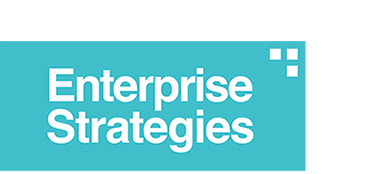
13 Apr Avoiding the Biggest Mistake in Understanding your Customer; Nobody Wants a Drill
 Imagine that you work at a local hardware store – one of those big box stores with the fashionable aprons. A customer comes in and tells you he “wants a drill.” Since you are a great employee, focused on the customer, you take him to the aisle full of drills. You may even go further and discuss price range, cord options, and something about a keyless chuck. (Which was invented by a guy named Jacob Chuck, who was a well-liked man about town. His brother, Up, did not fare as well.)
Imagine that you work at a local hardware store – one of those big box stores with the fashionable aprons. A customer comes in and tells you he “wants a drill.” Since you are a great employee, focused on the customer, you take him to the aisle full of drills. You may even go further and discuss price range, cord options, and something about a keyless chuck. (Which was invented by a guy named Jacob Chuck, who was a well-liked man about town. His brother, Up, did not fare as well.)
You have already lost your customer.
Notice I didn’t say lose the sale, because they may still buy a drill, but you have no understanding of the actual customer. Why? Because nobody wants a drill. Ever.
Repeat after me, “Nobody wants a drill.” Unless you are trying to start the International Museum of Drills (I’m looking at you Kickstarter!) or unless you are the curator for the Drill wing of the Smithsonian Institute – nobody wants a drill. What they want is a hole. That’s what they are really after. The “drill” is their mechanism for conveying what they think they really want. More importantly – and more problematic – is the “drill” is actually their metaphor for understanding the problem itself. You need to understand the problem to understand the customers needs which will give them a better experience of the business. PR services like NGP Integrated Marketing Communications are also a good way of relating to your customers.
Now this could easily go into a requirements discussion, but I want to take it another direction (Besides the best take on requirements was done in the famous tree-swing cartoon). I don’t want to talk about requirements, I want to talk about language.
When I say the customer wants a hole, I mean they have an end in mind, some specific goal they are trying to achieve. By asking for a drill, they believe they are conveying that information. That has the distinct disadvantage of being wrong. They really aren’t conveying any information. They have already conceptualized the problem using a drill metaphor and are intending to realize that vision using a tool known as a drill. I submit to you that as soon as they started thinking about the “drill,” they were off-track. Why? Because they were thinking of the problem in terms of the tool.
Frankly, this is why many organizations fail when they “introduce” technology. Even the wording shows you part of the problem. They are introducing a technology, not solving a problem! Furthermore, because technology is ingrained so deep into our culture, life, music, child-rearing, even religion…we now think about technology as the solution instead of a social tool to address some underlying problem.
So why not dig deeper and get better requirements from customers or employees? This is reminiscent of the 5 Whys method where you continually ask why. (I once mistakenly thought it was the 55 Whys method. So I spent 3 hours asking why before I knew something was amiss.)
Clarifying the “requirements” doesn’t really help when the “requirement” is just the metaphor for understanding the problem itself. Linguists have come to realize that metaphors are NOT purely a language construct; they are the way in which humans actually build conceptual models. This is a pretty fundamental shift. Steve Pinker in The Stuff of Thought says “a sentence can frame an event, affecting the way people construe it, in addition to simple conveying…” George Lakoff expanded this notion into politics when he discussed framing in Moral Politics. He provides an overview of how idea framing and metaphors contribute to shaping the way we think in the video below.
This all probably seems pretty intuitive to you at some level. What you may not know – and what research has demonstrated – is that this process seems to be innate and subconscious. People are remarkably unaware of how bad their perception actually is. The human perception process is fraught with attribution bias, encoding shortcuts, and other self-serving tweaks that make “seeing reality” a social exercise of interpretation as opposed to the scientific process of decoding reality. It’s called Naive Realism for a reason.
And all of this happens spontaneously without people being aware of the process. Jim Uleman of New York University has a series of interesting studies in which he found social judgements can occur during encoding. Imagine that. Before the perception is even stored, we have already attached our social interpretation to it! These cues can be helpful in retrieving the information, but they do not ensure accuracy. Not only are these categories hard to change once stored, our process of correction is highly self-serving. Furthermore, the process of categorization and characterization can also occur subconsciously. This effect increases under cognitive load – which is pretty much everyone today.
It is kind of scary that these implicit associations occur even without a person knowing it. People cannot control these associations even when made aware of them. In fact, the very act of attempting to suppress them can actually strengthen their activation, especially under cognitive load. This is aptly named the “ironic effect.” I experience this first hand all the time. When people think of me, they subconsciously think of Brad Pitt – even when I ask them not to.
As the great social psychologist Susan Fiske says “thinking is doing” or as George Lakoff would say “don’t think of an elephant.” The mere presence of these concepts effect – in very real terms – how a person acts and feels. These actions can occur without the subject being aware of it. Even seemingly directed and thoughtful action can actually be semi-autonomous.
So what does this all mean?
Well, you have a technology soaked environment, with an inherently flawed mechanism of perception which is affected by emotions and cognitive load. You have the framing effects caused by technology being everywhere within our lives. Combine that with the social dynamics of large organizations implementing change. Add in pushing people outside their comfort zones which change how they perceive their role within the organization. You basically have an impossible task.
Your success depends largely on how well you understand that your customers and employees need holes, not drills. They are using technology as a metaphor, as a kind of descriptive short-hand. In the end, technology will be involved. It might even be the same technology they “asked” for. Technology is the one constant driver which has pushed humanity forward: writing, navigation, trade, the web, medicine, tickle-me Elmo. However, technology should be a social tool to solve the problem, not frame how you think about it.

